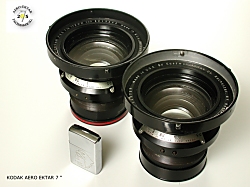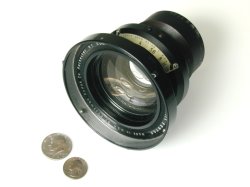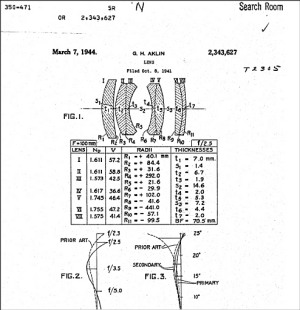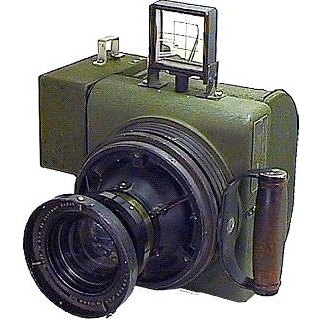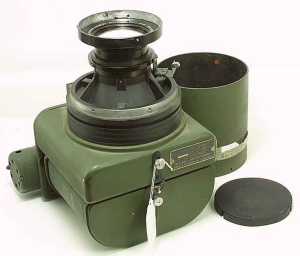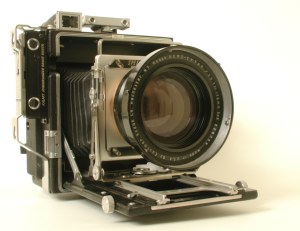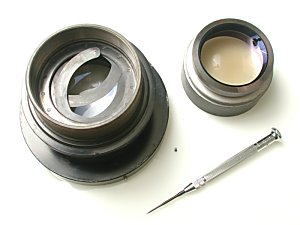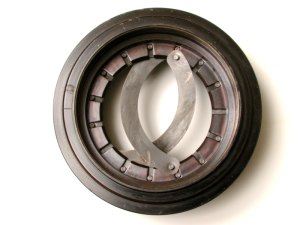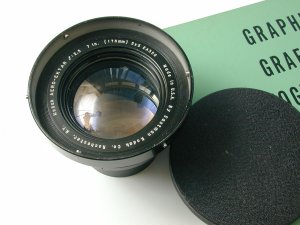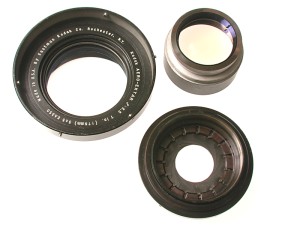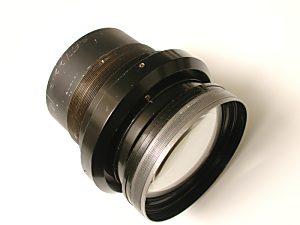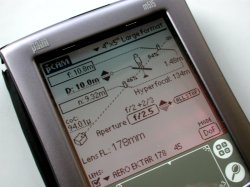 |
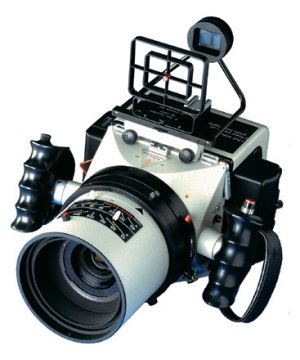 |
Aero Technica 45 Probably thanks to the experience gained during WWII the Linhof Aero Technica 45 evolved. Compact motorized camera system primarily for high quality oblique aerial photography. Large 4x5 in. or 6x9 cm images on 5 in. or 70 mm perforated rollfilm (approx. 150 exposures per magazine load). llllllllllllllll |
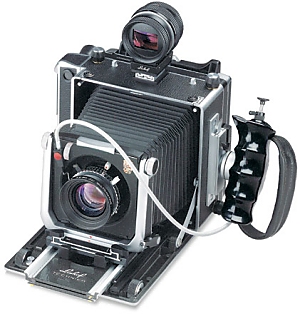 |
Master Technica 45 According many photographers this camera is the non plus ultra.
Allthough our Speed Graphic sometimes referred to as "The Poor Man's Master Technika" , we know our Pacemaker beats the Master on one important feature at least - The focal plane shutter. We have to disappoint Linhof owners who want to mount the Aero Ektar and want to experiment....Sorry, it won't work even if it is possible at all to get it mounted, you still will need a big black hat to control the shutter time. llllllllllllllll |
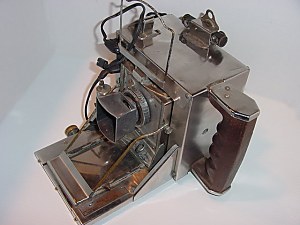 |
Stainless steel
This is a Graflex 3x4 completely covered with stainless steel. This camera was made for a crime photographer for the Toronto Star News Paper.
His name was Norm James. The camera he used had a CARL ZEISS LENS (TESSAR)1:4.5/2cm - Set in compur shutter, Leitz rangefinder.
|
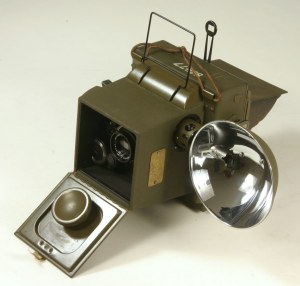 |
US MARINE Graflex
From the 1940s and the latter days of World War II, shown here is a very rare Folmer Graflex 4x5 military combat press camera in excellent condition.
Made by Folmer-Graflex of Rochester, New York, 1944 and 1946. This camera bears the serial number, 1969. The lens on this camera is a 127mm. f/4.7 Kodak Anastigmat Special with the serial number, EE1171. The “EE” prefix on the number indicates a Kodak manufacture date of 1944.
The camera was the property of the U.S. Marine Corp. But it was apparently transferred to the U.S. Navy, because there’s a brass Navy i.d. plate.
|
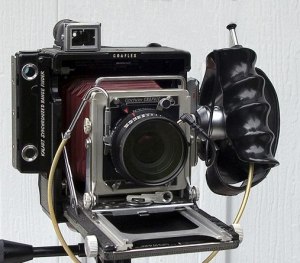 |
Master Graf ???
Hybrid Camera? No way, just a Century Graphic (2-1/4x3-1/4). I must admit the anatomical grip is a nice add-on but at a price these days! llllllllllllllll |
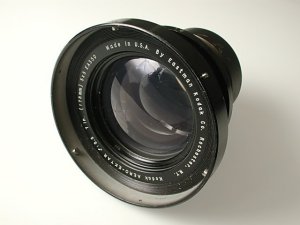
|
Early Model
Got in an early Aero Ektar with a Serno EA350.
|
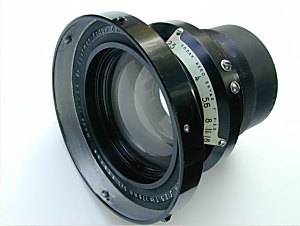 |
Specs
We only can give the specs from the model we have EE.
Dimensions:
|
....
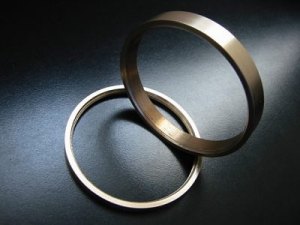 Mounting the Aero Ektar
Mounting the Aero EktarThe # 1 Solution ("Burnett Combo") #I Spacer and retaining ring The whole project was discussed by extensive phone and E-mail communication with Jo Lommen (Jo is an expert on restoring Press Cameras and much more.)in Roermond (NL). This was a very important start after buying the Aero Ektar EE*****. We looked over different possibilities to mount the beast. In our pursuit we've found images of David Burnett and came in contact. As David kindly shared photographs of his own configuration, we decided to go for this solution.
In our minds this was not extremely difficult to do but...
|

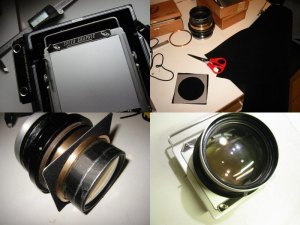 In progress....
In progress....#II The lensboard Construction.
The material used was brushed aluminium with a thickness of 1mm
|
......

 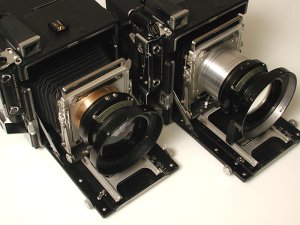
|
Alternate mounting solution. Second best choice...
By now you will have read any syllable about the mounting of the Aero Ektar, but there are more ways...
We have found this construction consisting of an original Graflex lensboard with a mounted tube.
N O T E :: There is one big advantage though on using this setup. Changing lenses is much easier and faster with this tube!
With this knowledge under your belt and our tips, please feel free to pick your choice. |
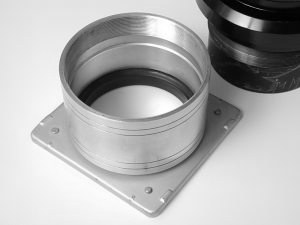
 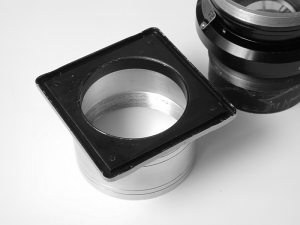
|
Alternate mounting solution. part II Detailed view
Detail of the .above construction:
Mount the lensboard the usual way...and screw in the Aero to the end stop.
Note:
|
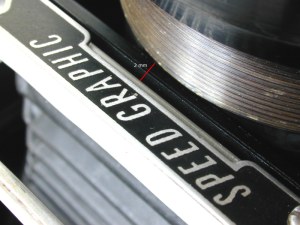 Image I  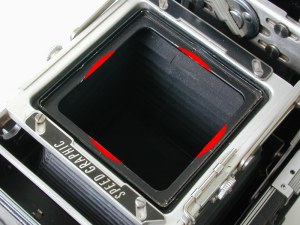 Image II |
The Perfect Fit U N D E R - C O N S T R U C T I O N Detailed view
Working with the two types above and evaluating the movements and weight on the front panel, it crossed my mind there must be another possibility to mount the AE.
Disadvantage:
N O T E :: Speaking for myself I think this is a minor nuisance, however collectors may feel different!. For us Photographers the only thing that counts is that it does not harm any functionality with other lenses at all. In my view the Aero Ektar can compete only on f2.5 with the modern plasmats. Modern lenses can perform much better when uniform sharpness and contrast is required. |
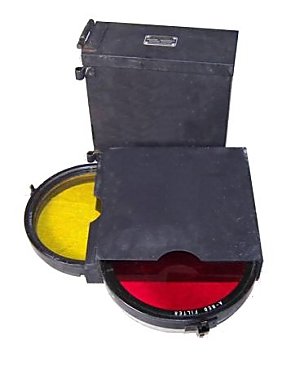 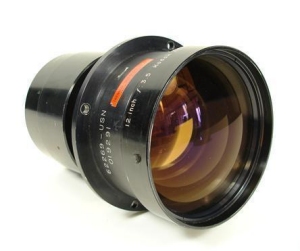 |
Original Filters
These filters are for the 178/2.5 according Ebay seller! Kodak Aero-Ektar lens . Filters of this size usually cost around $300-$400.00. They are used for B&W photography to cut glare and add contrast. They are solid colored red and yellow glass. The glass diameter is 6 inches and the thickness is about 1/4 inch. They come in the original individual metal drawers and the metal case.
Shown here is a package for the Aero Ektar. |
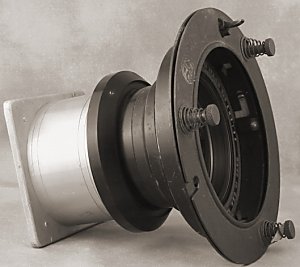 |
Filter Holder ??
The filters above measured 6In and were also meant for the Aero Ektar 12In. |
====
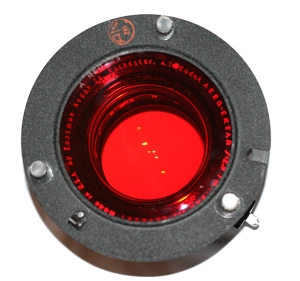 |
The real McCoy...
Can anybody shed some light on it? Yes, Oliver Kruse could, thank you Oliver!
The mount consists of two parts holding and securing the drop-in filter.
|






|
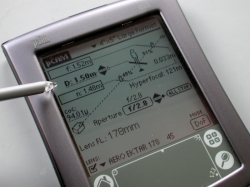
 |
Working with the Aero Ektar f 2.5 A few notes After you did mount the Aero and adjusted your Kalart RF you're ready to shoot!
Beware of the the very small dof at all times. To give a little understanding see our Palm screen.
If you focus within 6ft you need the GG and of course a tripod. A second screen dump will show the Values for a distance of 10 meter.
If you use a palm already read below:
Pcam description: One more thing, even mounted on a sturdy tripod, try to avoid camera movement by using a long cable release. Have fun! |
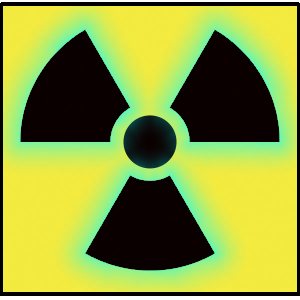 |
Radio Activity
The rear elements of the Aero-Ektar lenses are famous for having thorium glass that is a mild gamma radiation emitter. This lens element does, indeed, emit gamma radiation, approximately 3 mR/hr. according to my Geiger counter. I looked into what exactly this means to the timid photographer. My brief web research indicates that if you put this lens in your (big) pocket for 8 hours a day, 5 days a week, after six months you would have been exposed to the 5000 mR maximum permissable annual occupational exposure. So, don't grind it up and eat it, use it for a pillow, make it part of your uniform, or put your body in contact with this device on a regular basis.
Beyond a couple feet away, the detected level of radiation disappears into the background.
llllllllllllllll See our link for Mr Briggs for more information on Radio Activity! |

As you probably understand by now, this shopping list is not intended for your local Mall. Instead you have to google and search for the Speed Graphic, the Aero Ektar as well the Mask no 2.
The spacer, retaining ring and drilled lenshole will add some more difficulties, look out for a good machinist...
It takes a while to get it and a long while to get it right...
Looking for an Aero Ektar or Lensboard?
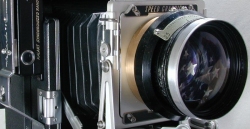
Burnett Combo
What do I need to build the Aero Ektar - Speed Graphic:
Jo Lommen can help you, right now he offers a lensboard, retainer ring and the spacer aswell. E-mail >>>>>> Jo Lommen.

Need Help?
Want info on how to do it yourself ?
Use our TalkBack button!
Have an Aero yourself, want to mount it?
Need a Lensboard?
Use the TalkBack button!
 Legal!
Legal!
 About
About
 Whois
Whois
 Aldis
Aldis
 Aero Project
Aero Project
 The Workout
The Workout
 Memorandum
Memorandum
 Encounter...
Encounter...
 Graflens
Graflens
 Lenses+
Lenses+
 Holes+
Holes+
 My Pacemaker SG's
My Pacemaker SG's
 Books
Books
 Graflinks
Graflinks
 Speedlights
Speedlights
 Gallery
Gallery
 WICF
WICF
 Contact
Contact
 Filmholders
Filmholders
 Start Page
Start Page
 Whatsnew
Whatsnew
